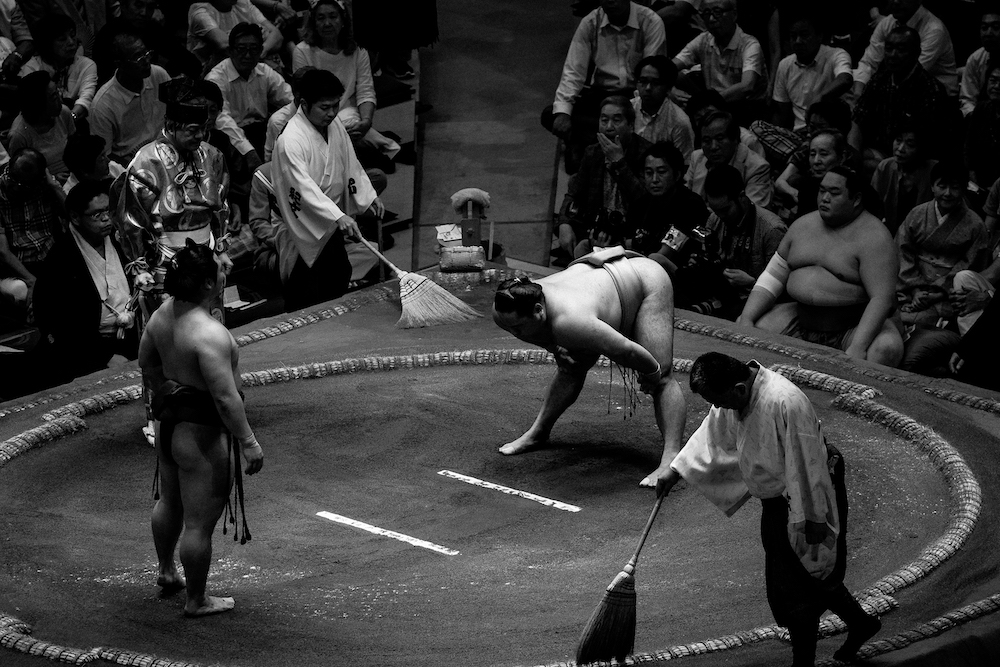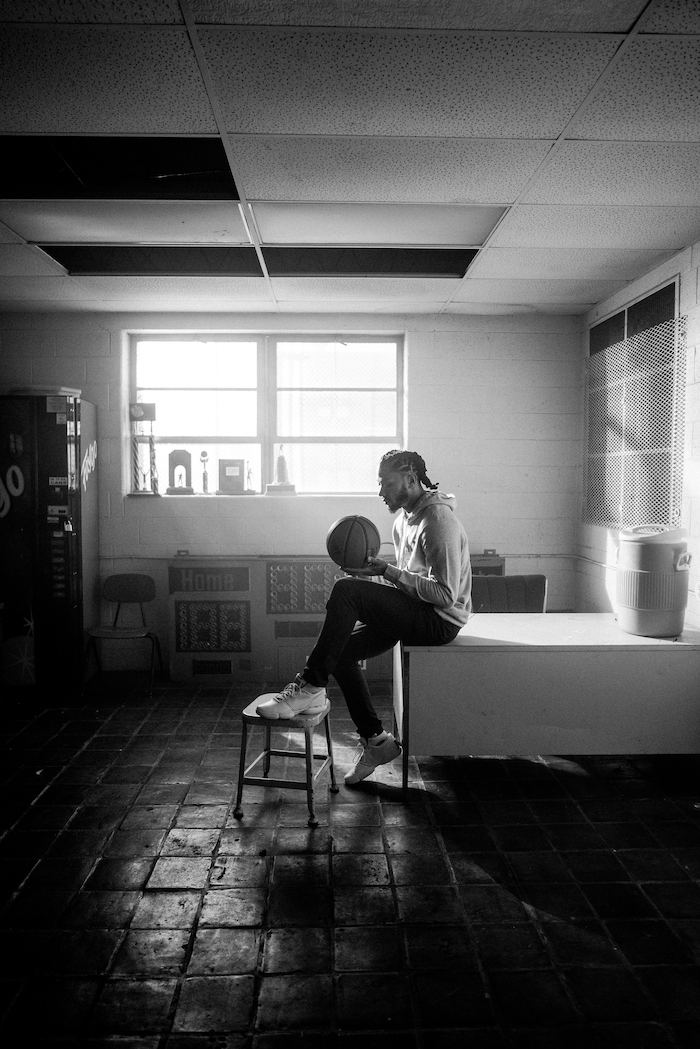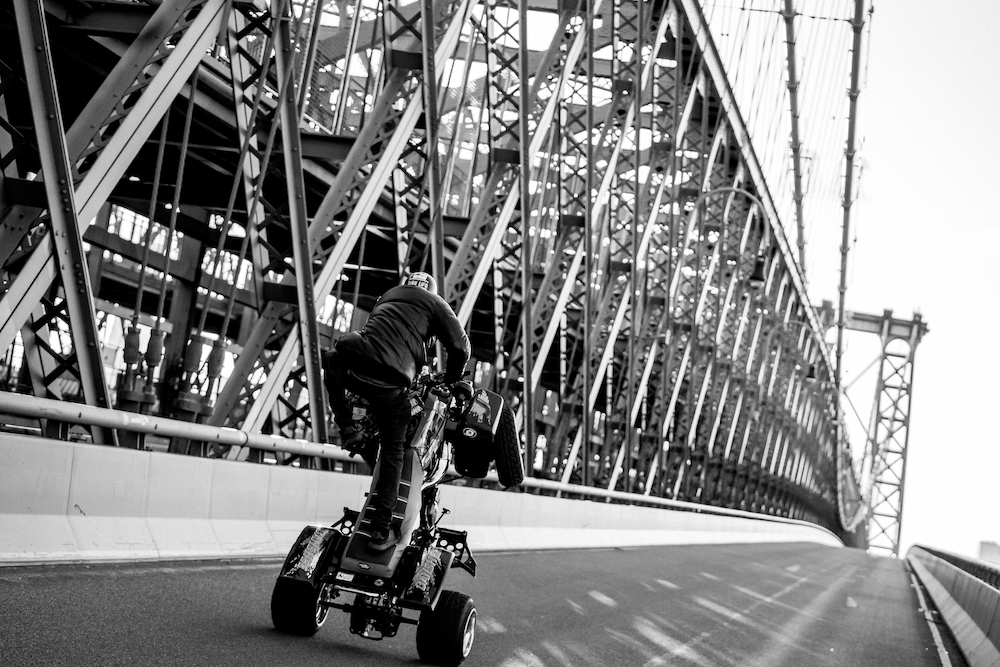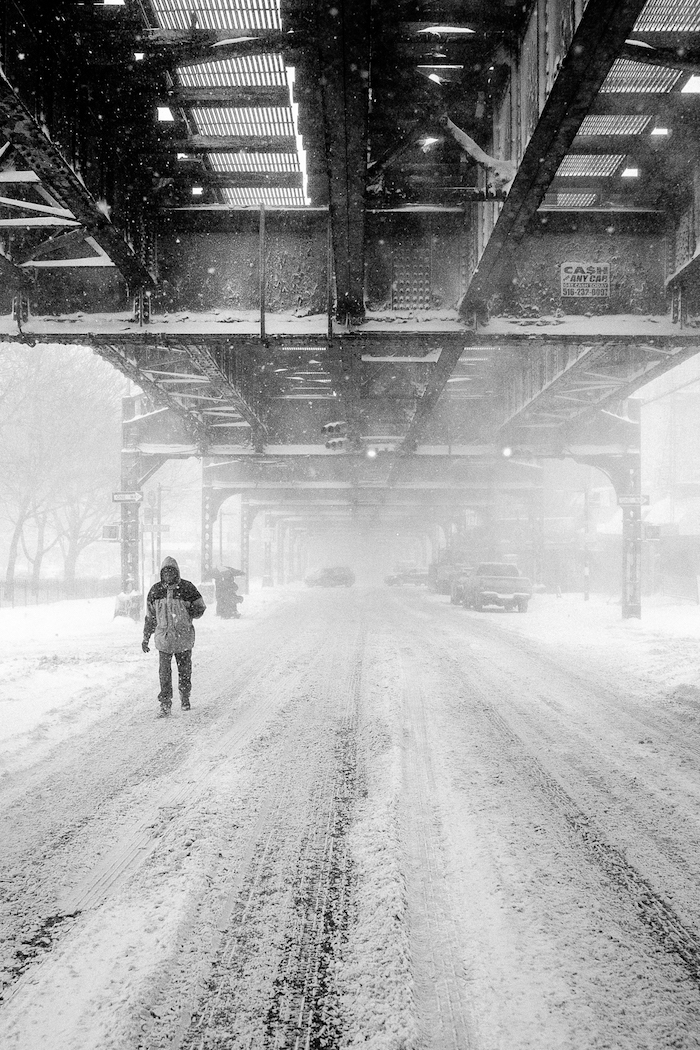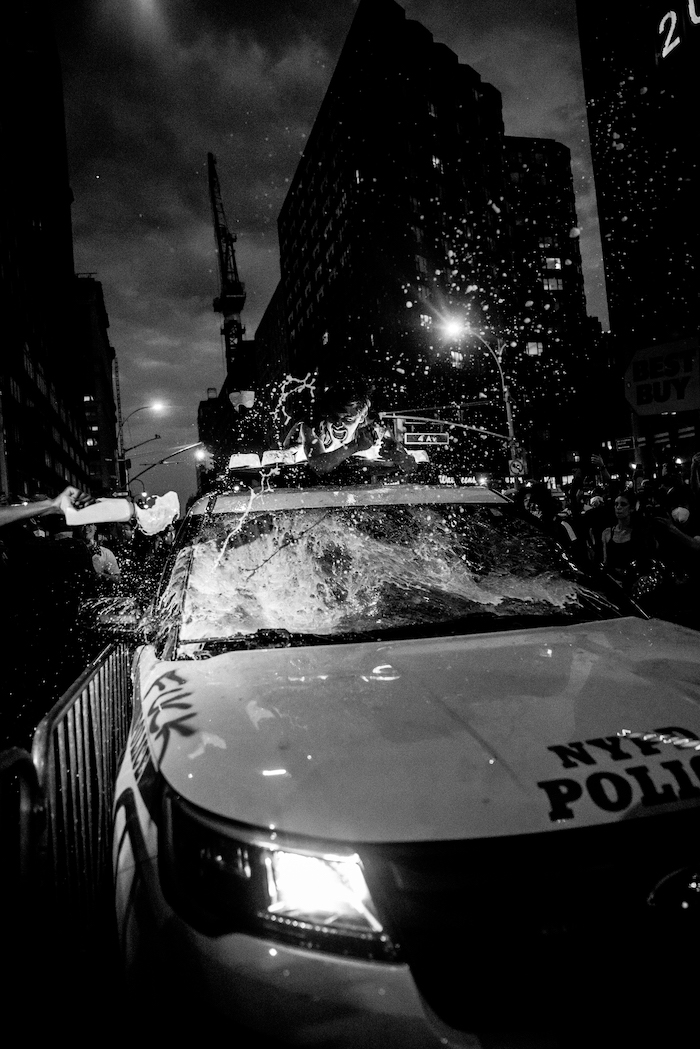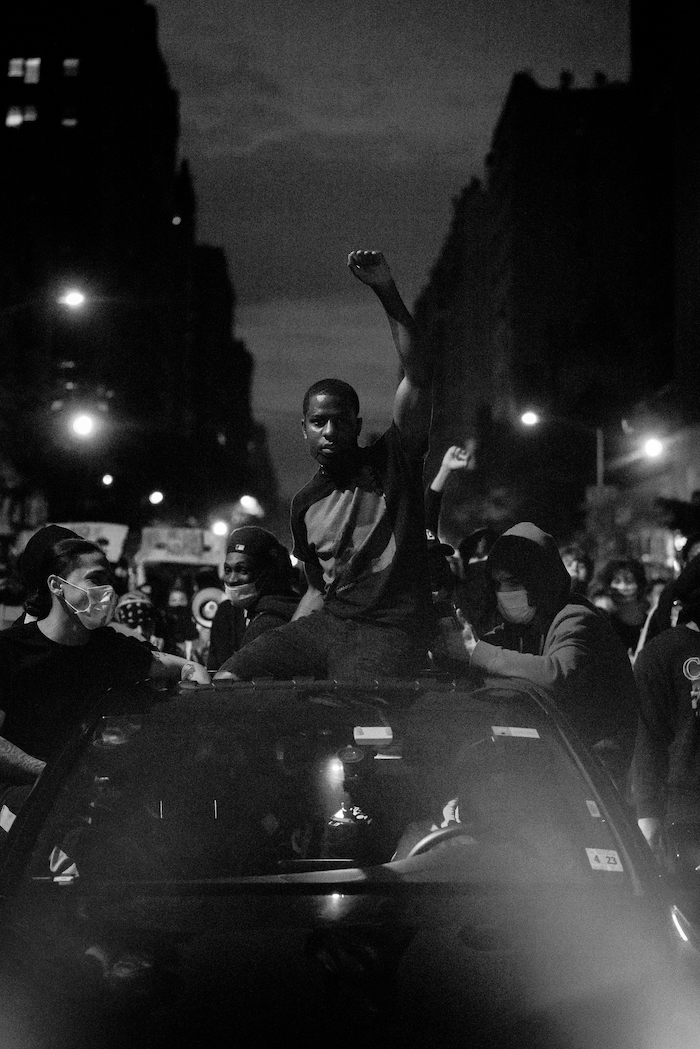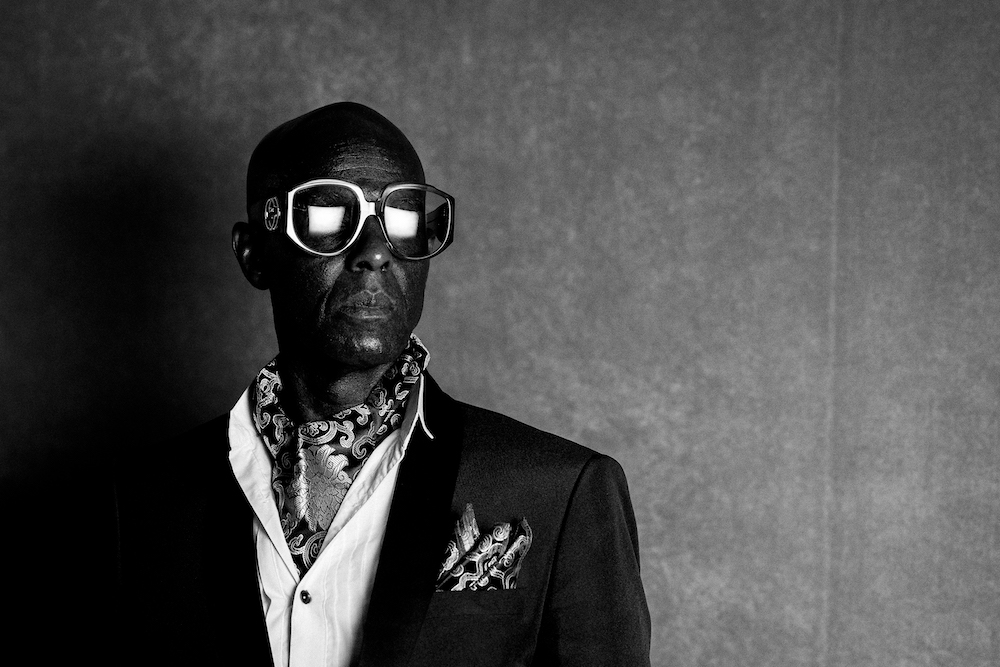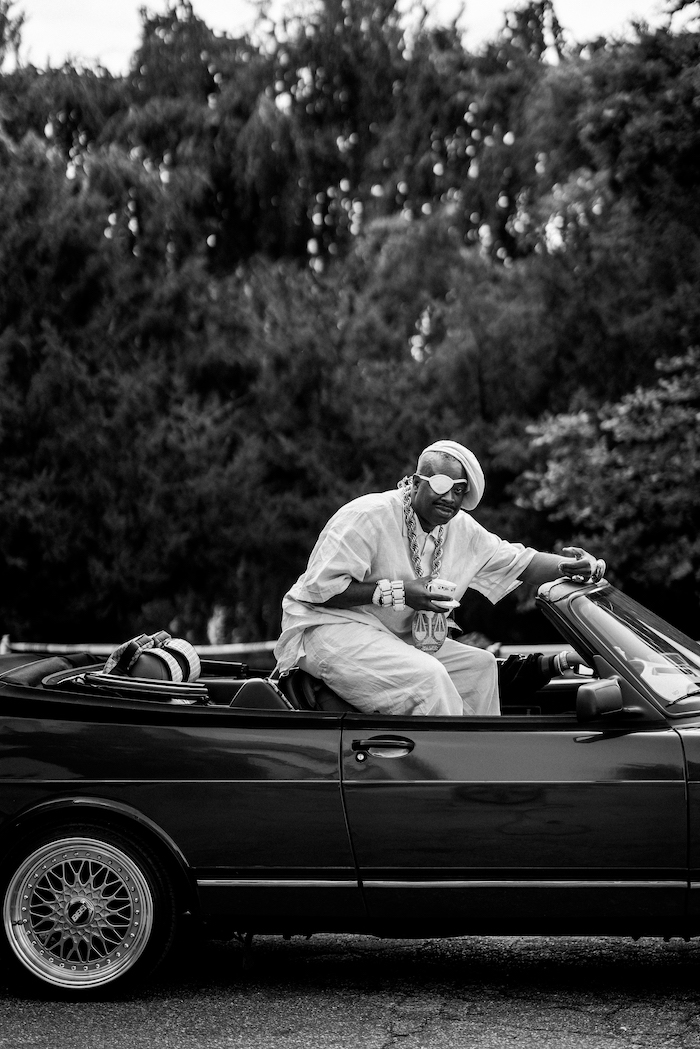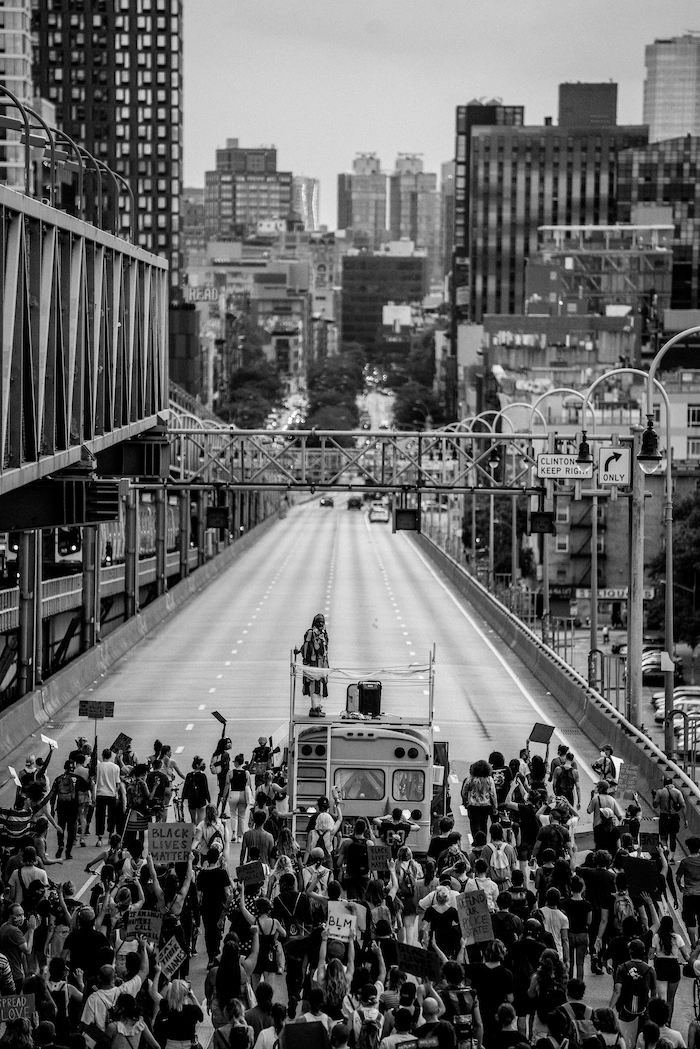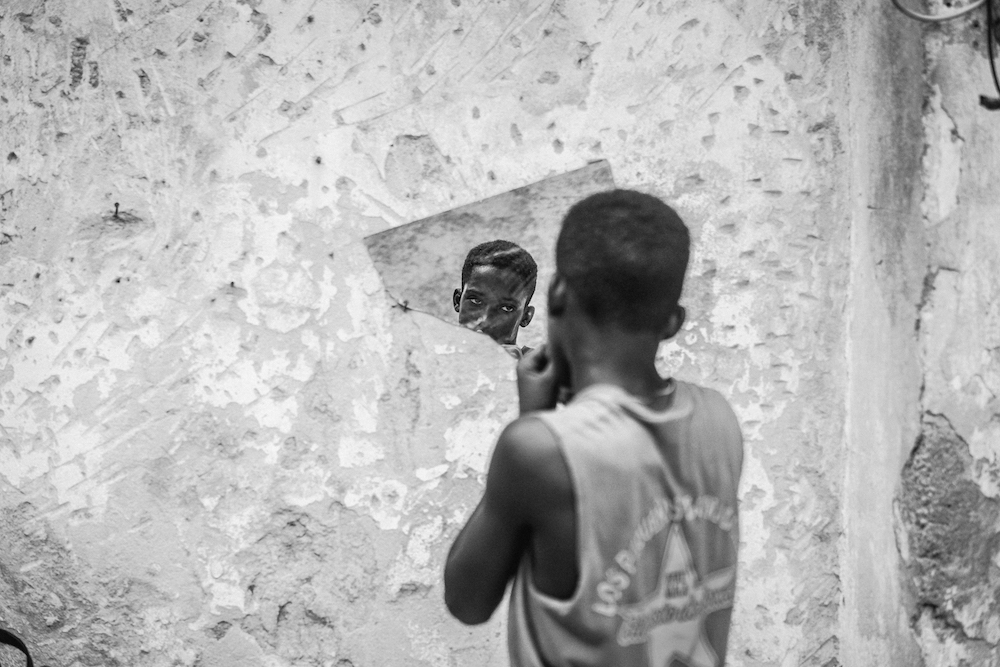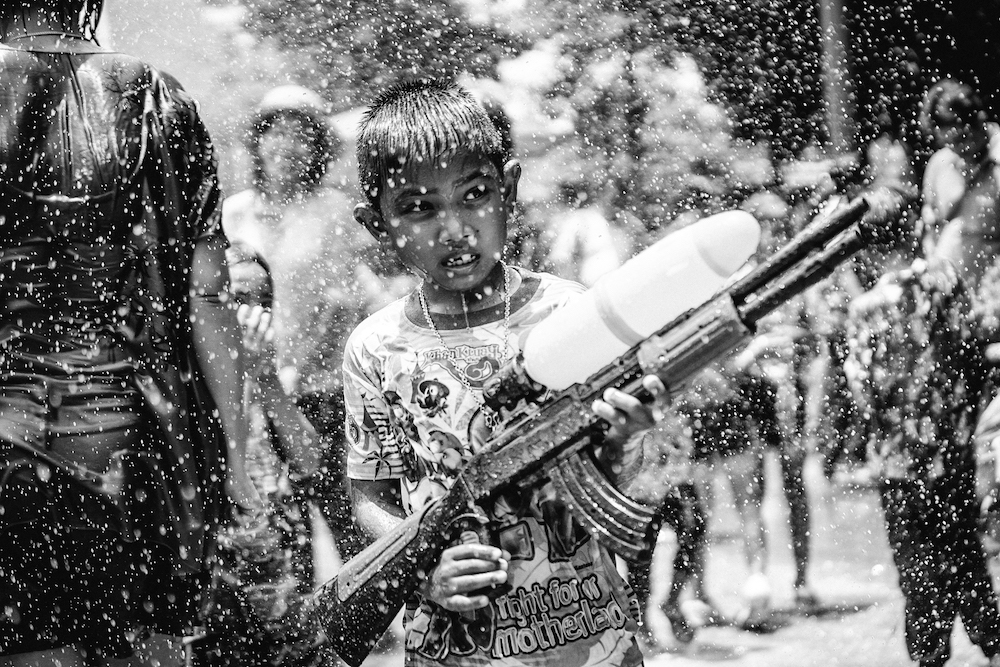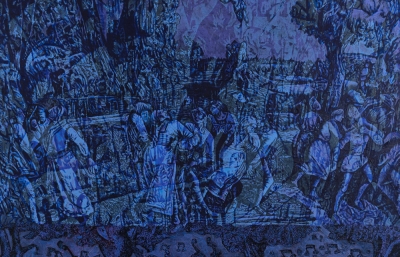“This is the first night that the city had established a curfew. I remember my mom telling me to watch my back when I went out that night. I didn’t know what to expect. The commute from Bed Stuy to uptown felt faster than ever. My palms were lightly sweating and my thoughts were moving faster then the train. But when I finally got out, and saw the thousands of humans in unison, I felt immediately at ease. My soul was blanketed with conviction and reassurance that we were in this together. The further we walked into the night, the stronger we grew as movement. The closer the clock moved towards curfew, the more empowered we all felt. While I was walking in the crowd and documenting for The New Yorker this summer night, I literally walked into a car. It was somehow masked in the center of the crowd, just creeping at a slow speed but with allies in the whip in solidarity. Me and the brother made direct eye contact with each other, and he sat on top of the car and slowly raised his fist. That moment felt like the definition of what it not only felt to be out that night, but how we will define our generation’s stance on the black experience.” —Steven Sweatpants

Ask Steven “Sweatpants” Irby how he got his start as a photographer, and he’ll describe a brief stint working at GameStop in the early years of Instagram. A customer entered the East Flatbush-born, Queens-raised photographer’s store, mentioned the app, and the street photographer knew he’d stumbled upon something that would deeply impact his life. He started documenting his neighborhood via iPhone, bought an old Canon Rebel XSN film camera for fifteen dollars, and the rest is history.
The iPhone and film combination helped to get his foot in the proverbial door, and today Sweatpants shoots digitally more often than not—generally with his Sony a7R III. The cofounder of Street Dreams magazine is signed to Sony as part of the Alpha Collective, which, with a sly smile he admits, consists mostly of his friends. Aside from that, he explains that Sony cameras offer an ideal blend of speed and light. Sweatpants also loves his Contax T2, a 35-millimeter film camera he can slip into his pocket when needed. The street photographer doesn’t have opposing gear, and that’s the way he likes it. “I love being quick and nimble. I don’t mind moving when I take my photos.”
It’s an approach that’s rooted in the ideals behind punk rock and hip hop—a clear, unadulterated take on what’s really happening out in the world. When the artist got his start, his sole purpose was to capture his neighborhood. He set out to take control of the narrative and tell an objective story. “For every single photo we take in the street photography community,” he says, “we’re documenting what’s really happening.” The overarching goal is simplicity—that is, in the sense of going back to basics. There’s a beauty in the simple things, Sweatpants explains: a father and son playing basketball in the park, intimate moments that may seem small in the grand scheme of the world—yet these are the moments the artist hopes to bring back to the forefront of our lives.
“I think it's really important to show just the most humane, simple human interactions,” he continues. “People are so caught up in all the complicated issues that are in the world right now, but if you can get this right, maybe you can get the other stuff right.”
In an introspective take on his craft, Sweatpants goes on to explain that he wants people from all backgrounds to view his photographs. On the one hand, he doesn’t want to bring his community down, but on the other, he doesn’t want viewers to stereotype Black people. How can his approach—no matter what outsiders say about street photography—not be a form of fine art in this way? Street photography may seem chaotic to some, but he is living proof of its intentionality.
Energy is critical to the artist’s methods. There’s a sense of taking in the energy of the day or the moment. On Juneteenth this year, Sweatpants remembers the minute that demonstrators reached the Williamsburg Bridge, he thought to himself, “Is it actually about to happen?” And so the bridge was barricaded, and the artist got in position—anticipating whatever might come next. “I'm not the kind of guy to think I'm going to stumble upon the work,” he says. This combination of adaptability and purpose culminated in the artist’s iconic Juneteenth 2020 image.
What’s in a name? Ask the artist about his alias, and he’ll credit his mother. When the photographer was a kid, the “Sweatpants” moniker often came down to his having to do chores—or really anything he didn’t want to do. Sweatpants would make excuses, claim he was too comfortable to get up and work, and somehow evade his daily tasks. In a way, it was empowering: He’d put on a pair of sweatpants, play a video game, start drawing to make up his graffiti name, because everyone in Queens was doing that at the time. “My mother looked at it almost as my superpower,” he explains. “Like I needed those sweatpants so I could be empowered.” That’s the beauty in the artist’s nickname. Yes, Sweatpants likes to be comfortable—but he wants those around him to experience the same thing. This, he explains, is a key element of his personality. In fact, the artist aims to inspire comfort in all his work, in his artistry, in his Instagram captions, and in his overall personality. The oft-overlooked attire that’s inspired his name is, in fact, multifaceted and very much on-brand.
To this end, Sweatpants complements his street photography with striking black-and-white portraiture. He inspires the sense of comfort as a creative director, crafting intimate images of figures like Dapper Dan and Derrick Rose. Viewers might take note of the change of scenery, but they’ll quickly recognize the artist’s signature candid style. “I'm the kind of photographer who really works off energy, and it's incredible to meet someone who has a really kind and empathetic kind of energy,” he says of his experience photographing Rose in Detroit. The images he captured of the basketball pro mean a great deal to the artist, and with the COVID-19 pandemic thrown into the mix, they’re all the more impactful. 
Sweatpants, one might argue, is largely an autodidact. He’s learned a great deal from experience—and the artist is more than willing to share key takeaways with his audience. His Ted Talk, “Don’t Live to Pay Your Rent,” honors his artistry, and though he was “nervous,” at the time, there’s a sense of authenticity (and a series of emotional stories) you won’t want to miss. “I had to put those stories at the forefront, and I didn’t want to screw it up,” he discloses. Sweatpants explains that even if the content didn’t get a million plays, his goal was to offer something people could walk away with—to offer something they could take home and apply in their own lives.
And then there’s Street Dreams magazine: the artist’s baby, so to speak, for the last six or seven years. He can’t help but laugh that it took a couple of Canadians to help him launch a magazine dedicated to the New York street photography scene. What started with a creative team appreciating his captions from another corner of the continent led to an outdoor meeting at the Williamsburg Bridge, and the publication took off! Sweatpants and his co-founders discussed the concept, started shooting, and got to talking about launching a Tumblr page featuring the artist’s photographs.
The idea was to go digital from there—but the team’s digital dream went to print just 48 hours later. They printed only 100 or so copies of their first issue, but things took off relatively quickly. Reed Space, Jeff Staple’s legendary street wear store (unfortunately, now closed) showcased the artist’s photographs in issue 003, with rooms packed to capacity and lines snaking around the corner outside. Sweatpants can’t help but seem a little dumbfounded by the growth of his project. Consistency is a common thread in the artists’ work, and, “We’ve been able to really keep it going and keep it consistent. We’ve been able to build an agency.”
Radio shows, podcasts, an issue of Street Dreams dedicated exclusively to his co-founders' native Vancouver—Sweatpants and his team are branching out, strategizing, and endlessly appreciative of the opportunity they’ve been afforded. Because, ultimately, the artist’s objective is to take back the narrative of his community—to fill a void for the middle ground and give the pretentiousness linked to so much of the art world a much-needed overhaul. “This is the best way that punk rock and hip hop vibe comes into play,” he says. “This is for the people—and I’ve always had that as my backbone.” This certainty has given Sweatpants a sense of purpose. It’s also helped him sharpen his muscles and develop his eye for photography. And by truly engaging with his community in this way, Sweatpants reveals that street photographers can come together and document what’s really happening out in the world—in real time. —Charles Moore
This article was originally published in the Winter 2021 Quarterly

